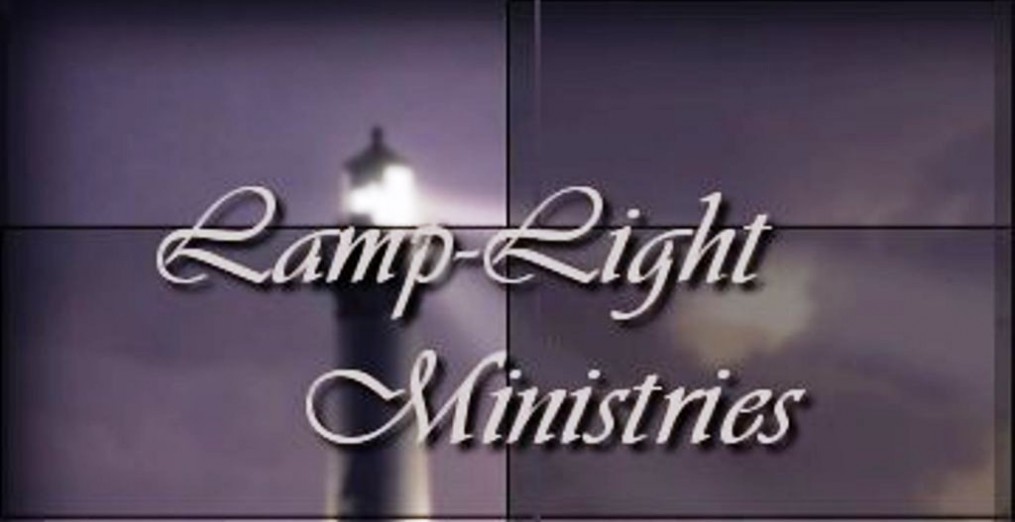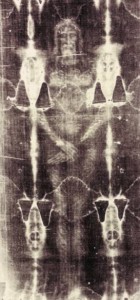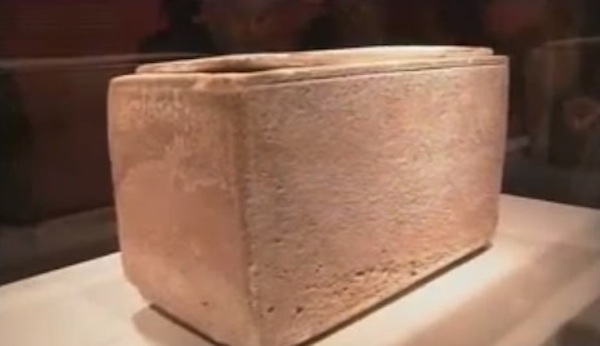By GF Herrin
Gabriel Reveals the Purpose of the Seventy Weeks – 9:24
In response to Daniel’s passionate prayer on behalf of his people, God sends Gabriel to reveal to Daniel that seventy weeks have been decreed for his people and their holy city of Jerusalem. The meaning of the word “weeks” in Hebrew is “hepthads”. A hepthad is a unit of measurement that is used to signify seven things are grouped together (Lehman Strauss, The Prophecies of Daniel, 1969, 267-68). This grouping of seven years together was not without precedent in the biblical text. Years were collected into groups of seven by God in His instruction to the Hebrews on the proper cultivation of the land of Israel.
Moses speaks of God’s land use instructions:
“Six years you shall sow your field, and six years you shall prune your vineyard, and gather its fruit; but in the seventh year there shall be a sabbath of solemn rest for the land, a sabbath to the Lord. You shall neither sow your field nor prune your vineyard. What grows of its own accord of your harvest you shall not reap, nor gather the grapes of your untended vine, for it is a year of rest for the land” (Lev. 25:3-5).
The Lord instructed the Israelites to carefully follow this mandate of observing the sabbatical year of rest for the land. Part of the reason for God’s removal of His people from their homeland was to provide a period of rest for it. “I will scatter you among the nations and draw out a sword after you; your land shall be desolate and your cities waste. Then the land shall enjoy its sabbaths as long as it lies desolate and you are in your enemies’ land; then the land shall rest and enjoy its sabbaths. As long as it lies desolate it shall rest– for the time it did not rest on your sabbaths when you dwelt in it” (Lev. 26:33-35).
The timing of the revelation of the Seventy Weeks is subsequent to Daniel’s understanding of Jeremiah’s seventy years as a significant prophetic period. The revelation at such a time suggests that God has put equal emphasis on the seventy weeks of seven period in regard to His chosen people. So, Daniel would have been especially interested to hear of Gabriel’s revelation of the future events. Gabriel, in verse 24 revealed six reasons for the Seventy weeks which will be discussed here.
To Finish the Transgression
As a nation, Israel had transgressed against God by turning to false gods and idols and offering sacrifices and offerings at the high places beginning during the time of Solomon’s reign. They also had not followed God’s statues and the Law that Moses had handed down regarding how they should live as His separate, chosen people who were called out of Egypt.
Part of the purpose of the seventy week period, then, is to finish the transgression of the people of Israel. The Hebrew word for “transgression” that is used is “pasha”, which can be translated to mean “revolt” or “rebellion”. In addition to rebelling against God’s ordinances, Israel would later commit the ultimate rebellion by rejecting Christ, their Messiah (Strauss, 277). However, part of the function of the Seventy Weeks, especially the last week, is to end Israel’s rebellion by reconciling them to God. This reconciliation will reach its ultimate fulfillment when Israel comes to saving faith in Jesus as their Messiah and King in the seventieth week. Zechariah writes, “And I will pour on the house of David and on the inhabitants of Jerusalem the Spirit of grace and supplication; then they will look on Me whom they pierced. Yes, they will mourn for Him as one mourns for his only son, and grieve for Him as one grieves for a firstborn” (Zech. 12:10).
To Make an End of Sins
This speaks of the second advent of Christ in which he will come to rule as the God-man in His millennial kingdom on Earth. God will put in the hearts of his people, Israel a new nature to do His will and to follow His commandments and to avoid sin (Strauss, 278).
Ezekiel writes of this time, “I will give you a new heart and put a new spirit within you; I will take the heart of stone out of your flesh and give you a heart of flesh. I will put My Spirit within you and cause you to walk in My statutes, and you will keep My judgments and do them. Then you shall dwell in the land that I gave to your fathers; you shall be My people, and I will be your God” (Ezek. 36:26-28).
To Make Reconciliation for Iniquity
In the latter days, Israel will mourn for their sins and come to understand that Jesus, the Messiah, has provided the sacrifice for them so that they can be reconciled to the Father. Israel will become God’s holy people again to live with him in the New Jerusalem. The veil will be lifted from their eyes. The partial hardening that Paul spoke of in Romans 11:25 will be removed. Their spiritual blindness will be no more. The will come to realize that only Jesus Christ can save them from their sins.
Jeremiah prophesies:
But this is the covenant that I will make with the house of Israel after those days, says the Lord: I will put My law in their minds, and write it on their hearts; and I will be their God, and they shall be My people. No more shall every man teach his neighbor, and every man his brother, saying, ‘Know the Lord,’ for they all shall know Me, from the least of them to the greatest of them, says the Lord. For I will forgive their iniquity, and their sin I will remember no more (Jer. 31:33-34).
Israel will come to know God intimately and be restored into a close relationship as His children.
To Bring in Everlasting Righteousness
The events of the Seventy Weeks will accomplish the tasks needed to be done to bring forth Jesus as Israel’s chosen king. With Jesus, the true Israel, established as king, the theocracy will be re-established. The Messiah will reign on his throne in Jerusalem and bring righteousness to all the land.
The Scriptures foretell the Messiah’s millennial reign as king:
Yet I have set My King On My holy hill of Zion. I will declare the decree: The Lord has said to Me, ‘You are My Son, Today I have begotten You. Ask of Me, and I will give You The nations for Your inheritance, And the ends of the earth for Your possession. You shall break them with a rod of iron; You shall dash them to pieces like a potter’s vessel’ (Ps. 2:6-9).
Jeremiah writes specifically of the righteousness that will be characteristic of the Messiah’s millennium: “Behold, the days are coming,” says the Lord, “That I will raise to David a Branch of righteousness; A King shall reign and prosper, and execute judgment and righteousness in the earth. In His days Judah will be saved, and Israel will dwell safely; Now this is His name by which He will be called: THE LORD OUR RIGHTEOUSNESS.” (Jer. 23:5-6).
To Seal Up Vision and Prophecy
Many interpreters hold the view that at the end of the Seventy Weeks all of the visions and predictions that the prophets made regarding the coming of Christ’s kingdom on Earth will be fulfilled. This includes the visions and interpretations of Daniel regarding the destruction of the Gentile kingdoms and establishment of God’s eternal, physical kingdom to come. Preterist Philip Mauro interprets this “sealing up” as an end to prophecy and vision given to the Jews as punishment to them for rejecting Christ (Philip Mauro, The Seventy Weeks and the Great Tribulation, 1998, 17). Certainly, sealing up could mean a stoppage of revelation given to the Jews. But, in the context with which this overall message is given (a response to Daniel after he prayed for his people and the city of Jerusalem), it makes more sense to understand this sealing up as a fulfillment of all prophecies given regarding Israel and their city.
In addition, the Hebrew word “nabiy” is more properly translated to mean “prophet”, not prophecy. Thus, the understanding is that a sealing up of the prophet or specific things spoken by the prophet will be accomplished (Thomas A. Howe, Daniel Notes, from Daniel class lectures, Southern Evangelical Seminary, 2008, 9.75). So, if we consider this, then it may be more accurate to interpret this passage as a statement that everything that Jeremiah spoke of including the reconciliation of Israel to God will take place at the consummation of the Seventy Weeks. This interpretation is consistent with God’s promises for Israel’s future redemption as well.
To Anoint the Most Holy
There are various interpretations regarding the anointing of the most holy. The text actually translates to “and anoint holy of holies”. This could refer to the anointing of the most Holy One, Jesus. E.B. Pusey seems to advocate that this prophecy referred to a spiritual fulfillment at Christ’s first advent (E.B. Pusey, Daniel the Prophet, Nine Lectures, 1885, 196). Mauro also spiritualizes the passage when he states that the anointing was accomplished at Pentecost (Mauro, 17). A preferred explanation would be a futuristic literal fulfillment. Given the fact that Saul, David, Solomon, and Jehu (1 Sam. 10:1; 16:13; 1 Kings 1:39; 2 Kings 9:6) were anointed with oil, wouldn’t it be expected that the King of kings, Jesus, would be formally anointed at the beginning of His millennial reign? After all, His reign will be the most anticipated event in the Scriptures. It is natural to expect that this coronation of Him will be marked by a formal anointing. It could also be interpreted that this prophecy foretells the anointing of the most Holy place of the future millennial temple. After all, in almost all of the places “holy of holies” appears in the Scriptures, it is used in reference to the altar, sacrifices, or priestly duties ministering in those areas (Howe, 9.76). Further, it is possible that this passage may be referring to both the literal anointing of our Lord Jesus Christ and the anointing of the Millennial temple. In the coming Kingdom, the man-God Jesus will dwell among men in His Holy place. So, it makes sense that the place of his dwelling will be anointed since He is holy.
Ezekiel prophesies of this incredible event:
Moreover I will make a covenant of peace with them, and it shall be an everlasting covenant with them; I will establish them and multiply them, and I will set My sanctuary in their midst forevermore. My tabernacle also shall be with them; indeed I will be their God, and they shall be My people. The nations also will know that I, the Lord, sanctify Israel, when My sanctuary is in their midst forevermore (Ezek. 37:26-28).
End of Part 2



